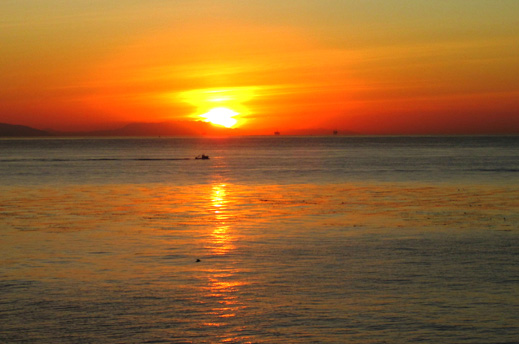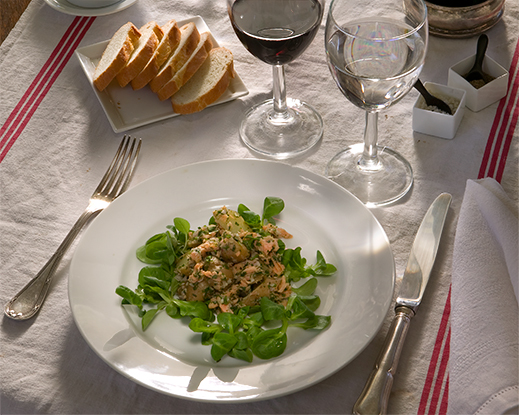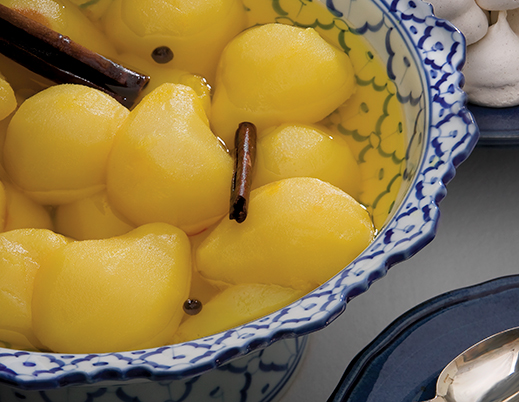Standing above the harbor one recent chilly morning, watching the sunrise painting the local mountains in pastel hues, I spied two fishing boats heading out to sea. I could hear the throb of their engines reverberating across the tranquil water, their silhouettes crisply outlined against the rising sun.

That sound transported me half way around the world to the Mediterranean Sea - decades ago - as I stood on another harbor wall watching the local fisherman bring in their overnight catch. They’d slowly coast past the harbor master, throttle back their throaty engines and tie up alongside the quay. In the winter months you could buy the fish right off the boats, in the summer the fish would be unloaded, hauled a few dozen yards across to the fisherman’s market housed in a converted passageway between two 19th century buildings. Inside the arched passage, the walls tiled with mosaics portraying fish, Poseidon and the sleepy fishing village, marble tables were covered with six inches of crushed ice awaiting the days catch. Local dealers handling fish from other markets had (they still do) the stands on the right, the local fisherman, the stands on the left. Passersby walked between them assailed on both sides with good humored cries to buy their particular fish. It is a very small market yet the fish of the Mediterranean were on dazzling display. All you would need to make a classic Bouillabaisse for example. There was no mistaking our locale.
I was enchanted therefore when I first came to Santa Barbara and found myself walking through the harbor, and coming across the local fisherman offering their fresh catch right off their boats; Spot prawns, rock crabs, white sea bass and halibut. Once again the ocean’s ‘terroir’ laid out before our eyes. I bought a sea bass and had it cleaned at the Santa Barbara Fish Market, then owned and run by the Fisherman’s Association. We roasted the fish with local lemons and fennel, some small potatoes and served it with a green salad. I felt instantly at home. We moved here within three months.
Some fifteen years later, I discovered in a conversation with long-time fisherman Gordon Cota and his wife Margaret (my children’s pre-school teacher) that they had had a hand in bringing this to fruition. On a visit to Steveston, British Columbia they saw the local fisherman selling their catch on the docks. Gordon’s photos of the trip found their way to the local harbor master in Santa Barbara. After some negotiations with the City, the fishermen were allowed to sell their fish to the local populous. Some thirty years later they still do.
Santa Barbara has had a long history as a fishing port, located in the middle of some of the richest fishing grounds in California due, in part, to the meeting of the warmer southern water and cooler northern water in the Southern California Bight. Some 550 species of fish inhabit or migrate through these waters. The ocean around Point Conception is a unique and rich habitat as the waters offshore serve as a point of convergence for species that inhabit the colder northern waters and those that live in the warmer southern ones. Because of this Point Conception and the Santa Barbara Channel serve as spawning and rearing grounds for approximately 64 species of commercial fish and shellfish throughout the year.
Commercial fishing which began locally in the 1870’s , flourished with the sales of abalone, driven by a demand for abalone meat from the growing Chinese community in California and by a vibrant export market to China from the 1880’s to 1915. Abalone was continuously harvested in local waters until the 1970’s and is now solely farmed off our coastal waters. Santa Barbara harbor had a strong fishing fleet throughout the 20th century, however with the passage of Proposition 132, in 1990, a Marine Resources Protection Zone was established that banned the use of set gill nets (one of the main fishing methods used by local fisherman) within three miles of the mainland (1 mile of the shoreline of the Channel Islands) in waters with a depth of 420 feet or less. The ban, affecting southern California waters, went into effect in 1994. This ban had a significant impact on the local fishing fleet.
Despite this important change in how the local fleet could fish, Santa Barbara’s fisheries are still very productive. Local fish can be found on a daily basis, much of it at Santa Barbara Fish Market which is situated in the harbor. Now run by Brian Colgate, the son of a Santa Barbara fisherman, who had worked as a cutter in the original location, he champions our local produce. ‘Eating fish that is caught locally and sustainably is entirely possible’, he told me. He carries a great selection of seasonal fish, shellfish and crustaceans. The local fisherman catch urchins, rock fish, halibut, white sea bass, black cod, spot prawns, rock crab and salmon to name a few.
There is something very satisfying about picking up a fish you know has traveled all of 30 yards off the boat to the cutting room table in Brian’s market. After meandering through the Saturday farmer’s market to pick up a basket full of fresh vegetables and herbs, I like to pop down to the harbor to see what the day’s catch has brought in, perhaps they’ll have some local king salmon as the season is just beginning. As Gordon Cota told me, ‘the ocean is very much alive’. We are fortunate to have a place to savor it.
SMOKED TROUT SALAD
I love smoked fish. Smoked salmon in particular and the smoked trout salads I grew up with in France. They are classic Bistro fare – unfortunately no longer so popular on those menus – but it’s delicious and makes a great lunch by itself with a good baguette and a glass of chilled white wine.

Serves 8 people
½ cup olive oil
1 tablespoon Dijon mustard
4 tablespoons shallots – peeled and finely diced
1 tablespoon white wine vinegar or white balsamic
Zest of 1 lemon
Juice of ½ lemon
Flake salt and freshly ground black pepper
1 tablespoons fennel seeds – pan roasted for 3-4 minutes
8 oz smoked trout – skin and any little bones carefully removed
1 lb fingerling potatoes – cooked with 1 teaspoon of 4 peppercorn mix, a bay leaf and 2 allspice berries
½ bunch chives – finely chopped (this equals about 3 tablespoons)
½ bunch dill – finely chopped (this equals about 3 tablespoons)
½ bunch parsley – finely chopped (this equals about 3 tablespoons)
8oz Mache
ORIGINS: SMOKED FISH Smoking fish has existed as a preservation method for thousands of years. Remains of ancient smokehouses have been found in Ireland, Italy and Eastern Europe. The ancient Greeks were well known for their smoked black sea tuna which they packed in jars for transport and trade. From medieval Europe where it was prevalent to Native American tribes in the Pacific Northwest, whose smoked salmon was well regarded, each region has developed its smoked specialties. Thanks to the advent of refrigeration, smoking is now used for flavor rather than preservation, but techniques have changed little over time, using either hot smoking (up to 18) degrees for a shorter period of time) or cold smoking (from 60-110 degrees for more than 24 hours) to preserve the fish. Oily species such as salmon, trout, black cod and tuna are well suited to these methods.
POACHED SALMON WITH ORANGE AND OLIVE OIL, SERVED WITH CORIANDER PESTO
Serves 8 people
2 ½ lbs filet salmon – skin off
3-4 cups orange juice (this will depend on how deep your pan is)
1/3 cup olive oil
Salt
3 cardamom pods – slightly crushed
Pepper
1 bunch cilantro – leaves removed
For the coriander pesto:
1 bunch fresh coriander (cilantro) - stems removed
½ bunch chives - chopped
1 tablespoon toasted almonds
1 medium clove of garlic – peeled and finely minced
¼ - 1/3 cup olive oil
Zest of 1 lemon and 1 tablespoon lemon juice
salt
freshly ground black pepper
SAUTÉ OF SPRING VEGETABLES
Serves 8 people
Olive Oil
3-4 bunches mixed chard, bok choy, pea sprouts, brocolini – rinsed clean and chopped
Coarse salt
Pepper
Zest and Juice of 1 lemon

POACHED SAFFRON PEARS
WITH TOASTED PECAN CRÈME FRAICHE
Serves 8 people
8oz sugar (1 ¼ cups)
¼ cup honey
8 cups water
1 cinnamon stick
Large pinch of saffron
3 whole allspice
2 whole cloves
8 pears – peeled, halved and cored
For the Crème Fraiche:
1 large container crème fraiche
4 oz pecans – roughly chopped
1 teaspoon sugar
½ teaspoon cinnamon